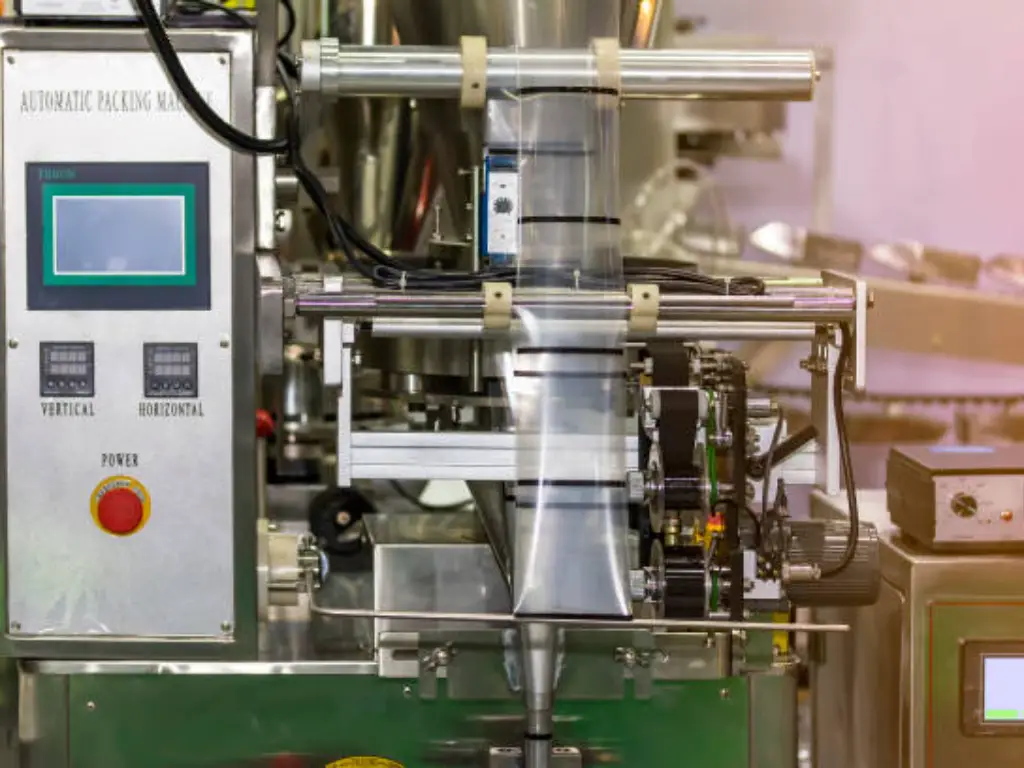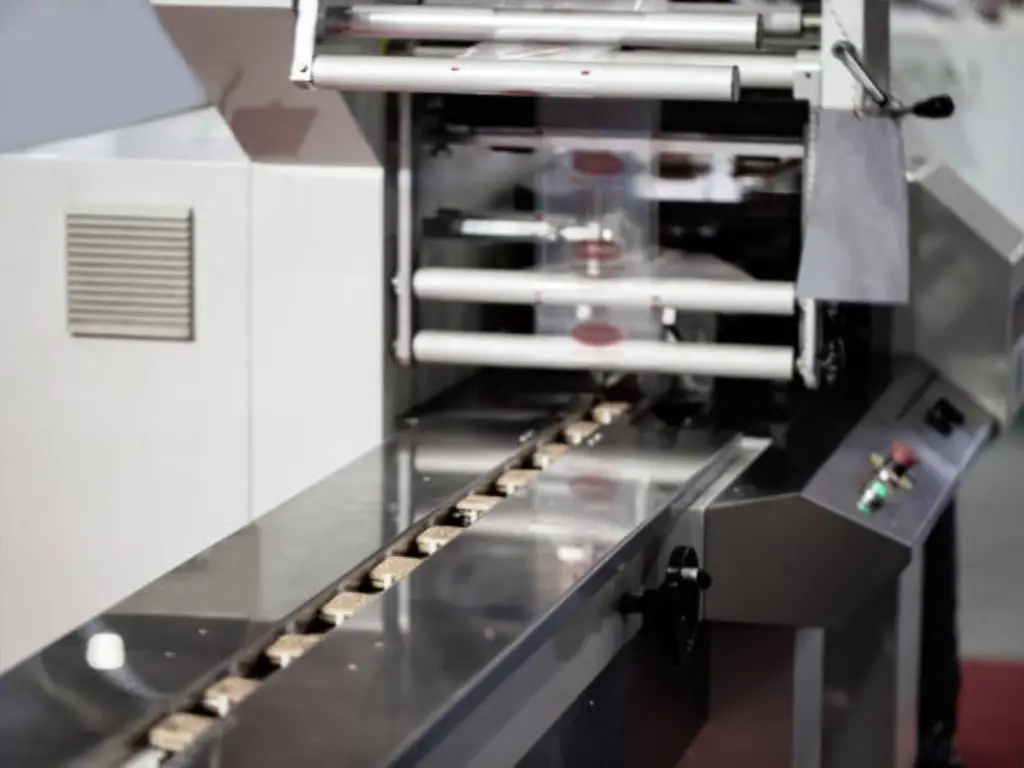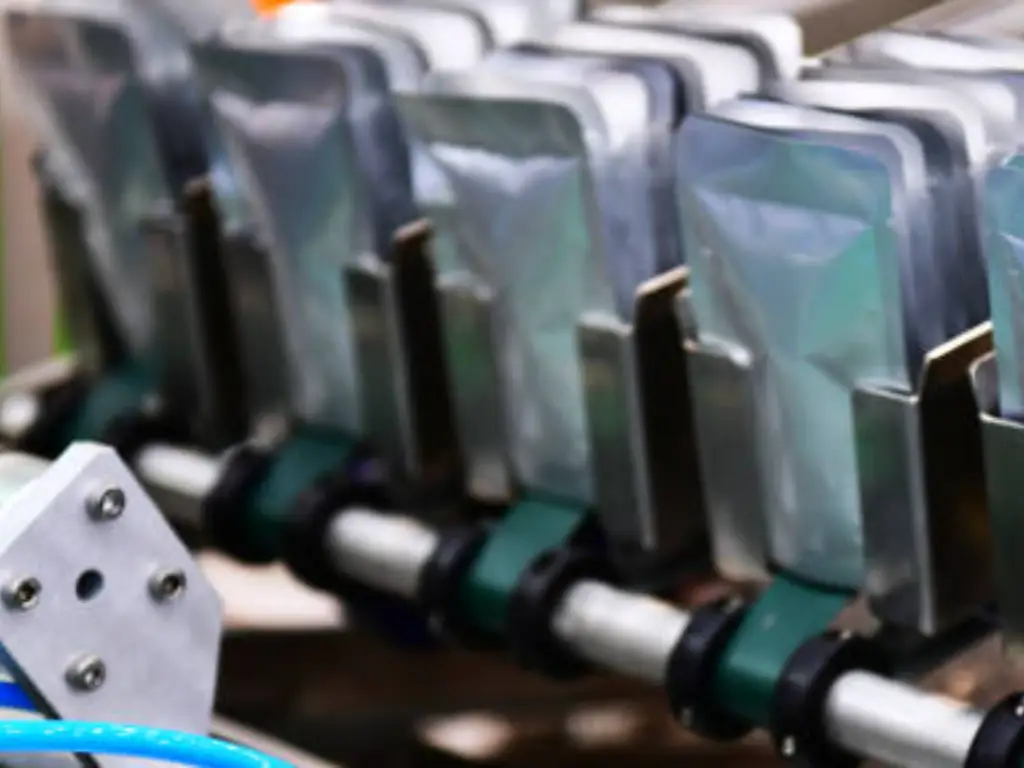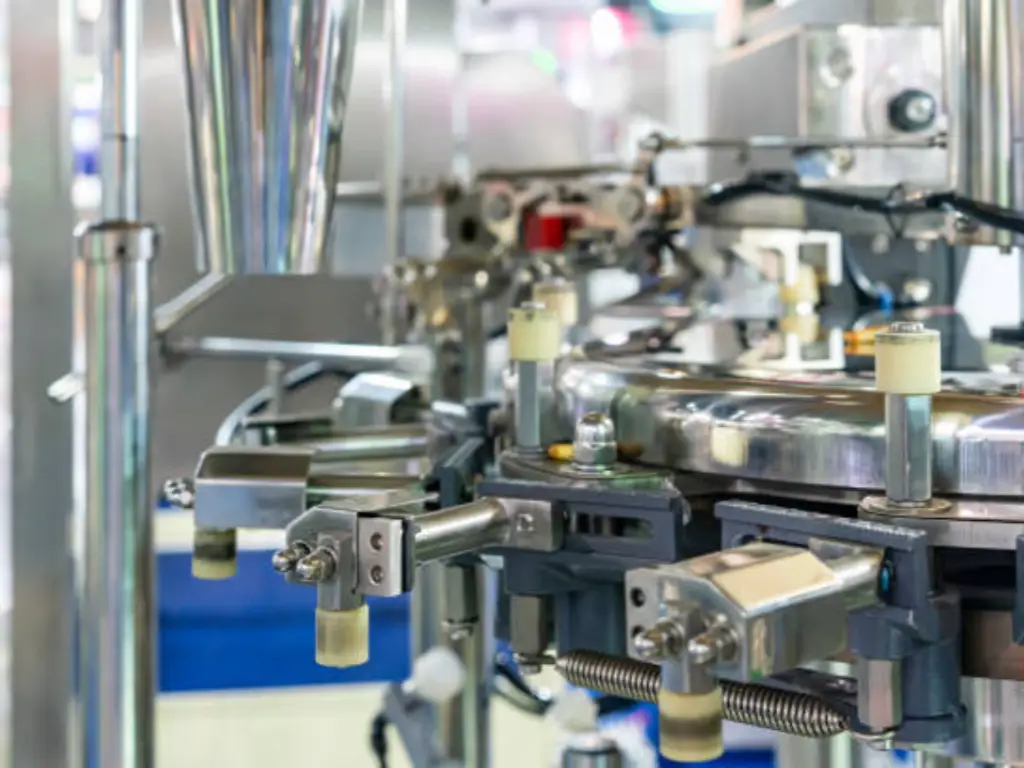One of the most significant investments a company can make in order to expand operations and maintain the integrity of its products and its competitiveness in the contemporary market is packaging automation. One of the most varied and commonly used solutions is the pouch packing machine. This is equipment that provides an advanced technique of packaging various products into flexible pouches and satisfies the requirements of many industries to be efficient, reliable, and presentable. This guide is intended to be a detailed look into the technology of pouch filling machines, basic concepts, as well as important things to consider during acquisition, and is meant to serve as a strategic tool to business owners, plant managers, and procurement professionals.
What is a Pouch Packing Machine?
A pouch packing machine is an electromechanical system that is used to automatically pack products into flexible, pre-formed pouches or pouches made out of a flat roll of film. Its main purpose is to precisely fill a pouch with a specific amount of product and then effectively seal it to keep it safe and free of environmental interference, extend shelf life, and make it ready to be distributed and sold.
Very much designed to meet a broad range of product types such as powders (flour, protein powder), granules (coffee, snacks, grains), liquids (sauces, beverages, detergents), and solid items (medical devices, small hardware). Bag filling machines replace manual or semi-manual labor, bringing with them great benefits in terms of production speed, packaging consistency, and operational hygiene. They are a staple element of the modern production line, and they connect the processes of creating products with their ultimate market display.
Types of Pouch Packing Machines Explained
The market can be categorized in terms of the pouch packing method used in forming, filling, and sealing the pouches. These distinctions are central to the choice of technology to be used in any application.
Vertical Form-Fill-Seal (VFFS) Machines

The FFS machines assemble pouches out of a single roll of flat film in a vertical position, which is commonly referred to as form fill seal. This starts when the film is pulled off the roll and pulled through a forming tube that rolls the flat film into a vertical tube. The back seal of the pouch is then produced by a vertical sealing bar. A horizontal sealing jaw then forms the bottom seal of the first pouch, and at the same time forms the top seal of the earlier filled pouch beneath it. The product is then fed into the pouch by dropping through a filler (a weigher or an auger-powered filler) through the forming tube. The last step is the top seal via the horizontal sealing jaw and the separation of the finished pouch that falls on a conveyor. Bulk goods, powders, liquids, and other granule products are highly efficient when packaged with the use of VFFS systems.
Horizontal Form-Fill-Seal (HFFS) Machines

HFFS machines run on a horizontal plane and form pouches out of a roll of film in a horizontal form fill process. The film is loaded into the machine, folded, and sealed on three sides to make a pouch that is positioned to fill the station via indexing. The main difference is the horizontal direction of movement and the possibility to move the products that cannot be simply replaced vertically, like solid, flat objects, like dry goods, hardware kits, or medical test kits. HFFS machines are commonly used to make stand-up pouches (Doypacks) and can incorporate complicated elements such as zipper closures and spouts in the forming process.
Mesin Pengemas Kantong yang Sudah Jadi

In contrast to form-fill-seal systems, a premade pouch packing machine uses pouches that are already made and arrive ready to use. The mechanism is used to select one of the quick bags in a bag magazine, hold it, and open it through a vacuum mechanism or air jets. An open pouch would then be taken to a fill station where the product is released. After the filling process, the next operation is a sealing station where bars are heated to provide the final top seal. The premade pouch machines are highly regarded due to the fact that they can process high-quality, graphic-intensive pouches, including special features such as press-to-close zippers, spouts, and shapes that may not be easily manufactured in-line. They exist in two major configurations:
- Rotary Machines: The grippers that hold the pouches are on a rotating carousel moving in a circular pattern through various stations (opening, filling, and sealing). They are usually quicker and more durable, and can handle high production rates and high output.
- In-line Machines: In these machines, the pouches are in a straight line, moving through the various stations. These systems are relatively less complex and may be more compact; hence, they are usually suitable for facilities with space limitations or with fewer production requirements.
If you want to know more about the differences between rotary machines and inline machines, read this article: Mesin Pengemas Linear Vs Mesin Pengemas Putar: Bagaimana Cara Memilih yang Tepat?
How Does a Pouch Packing Machine Work?
The mechanics of each type of machine are different, but the working sequence is the same and logical. As an example of a premade rotary pouch machine, the entire filling process is divided into a series of steps:

- Pouch Loading: The operator then loads a stack of premade pouches into the easily accessible bag magazine located at the front of the machine. A quick bag loading station will provide convenient feeding with minimum loss of time.
- Pouch Infeed and Gripping: A pouch handling arm with suction cups picks an individual pouch and transfers it into a pair of grippers that will hold it firmly as it moves through this unique machine.
- Printing/Embossing (Optional): An Optional step in which date codes, lot numbers, or other variable data can be printed or embossed to the pouch.
- Pouch Opening and Detection: The grippers pull the bottom of the pouch, and the top is opened with an automatic zipper opener or air jet. A sensor assures that the pouch is open and ready to be filled. When a pouch does not open, the filling cycle on that station is skipped to avoid spillage of the product.
- Pengisian Produk: The open pouch is placed beneath the filling device (e.g., a multi-head weigher to fill solid products, an auger filling machine to fill powders, or a piston pump to fill liquid products). The product is well dispensed in the pouch.
- Sealing and Deflation: The pouch goes to the sealing station. A mechanism can be used to squeeze the bag gently before sealing. The top edge of the pouch is then sealed by heated seal bars, which apply pressure and heat and thus create a hermetic seal.
- Cooling and Discharge: After sealing, there can be a cooling bar that can press against the seal to enhance it. The grippers thereafter open the completed pouch, which is ejected onto a conveyor to be transported to case packing or secondary packaging systems.
Key Features to Consider in Pouch Packaging
When selecting a pouch packing machine, it’s important to consider several key features that directly impact efficiency and product quality.

Pouch Sizes: This is to make sure that the machine supports different sizes of bags to suit your packaging requirements. The machines that can handle a variety of pouch types, including block bottom, side gusset, and pocket zipper bags, also provide flexibility that enables the machine to package a variety of products.
Material and Durability: Durability and easy maintenance depend on the material of the pouch packing machine. Stainless steel is the most common because it is resistant to corrosion and requires a simple cleaning method, and is long-lasting. This is why it is ideal for industries such as food and medical packaging, where hygiene is a top priority.
Kecepatan dan Efisiensi: Machines that have high production speed are ideal in large-scale businesses because they make packaging quick and accurate. Conveyor systems, automatic pouch filling systems, and integrated exit conveyors can help to streamline any workflows, even in a high-demand production setting like snack or pet food packaging.
Automation: Completely automated machinery has the potential to cut down on labor requirements and increase the speed of the packaging process. Filling and zipper opening sensors are automatic, which means that they can reduce human error, improving consistency and making operations faster.
Popular Pouch Types for Packaging Machines
The flexibility of pouch packing machines is equaled only by the diversity of the pouch styles the machines will accommodate, each with unique benefits of product protection and product promotion.
- Pillow Pouches: This is a simple, low-cost pouch that utilizes a single web of film, with seals at the top, bottom, and a vertical fin seal on the base. Used commonly as a snack, such as chips or crackers.
- Stand-Up Pouches (Doypacks): These pouches have a bottom gusset, which enables them to stand up on a shelf, giving them good retail visibility and a distinct appearance. Commonly used in a variety of products, including granola and liquid soaps, they frequently come with a re-sealable zipper or spout.
- Three-Side Seal Pouches: A flat pouch that is sealed on three sides, with one side that is left open to fill the pouch. They are cost-effective and suited to single-serve applications, e.g., powdered drink mix or jerky.
- Gusseted Bags: These bags are gusseted on all sides and are more boxlike in shape when full. It is mostly used in products such as coffee beans and flour, with a fully automated system creating maximum use of shelf space.
Industries Benefiting from Pouch Packaging
Pouch packing machines are common in many industries with their different packaging requirements. Here are some of the main industries that can benefit from this multi-purpose packaging solution:

- Food and Beverage
Pouch packaging is mostly used in the food and beverage industry. Pouches can play a vital role in keeping products fresh, acting as a barrier against oxygen and moisture, and are also easy to use by consumers. Pouch machines are very efficient in packaging snacks and drinks as well as ready-to-eat foods and dry foods, providing convenience and quality.
- Pharmaceuticals and Nutraceuticals
Pouch packaging plays an important role in the pharmaceutical and nutraceutical industries where precision, sterility, and adherence to stringent regulations are important factors. Tamper-evident packaging is available using pouch machines, which are suited to powders, pills, and medical devices. Combined with additional filling machines such as a linear net weigher, these machines achieve the desired dosing accuracy to industry standards.
- Chemical and Home Goods
The home goods and chemical industries are in need of packaging that focuses more on safety and durability. Pouch packing machines are applicable in packing products in hard pouches such as detergents, fertilizers, and solvents, which are handled safely. Most of the machines have special closures to avoid spills and easy dispensing.
- Pet Food
Pouch packaging is beneficial to the pet food industry, whether it is wet or dry food. In this industry, machines should be able to support a larger pouch size and be able to preserve product freshness and create sturdy seals to prevent odors. Such machines are expected to meet the challenge of quality packaging of products such as pet chews and other specialised pet food products.
Factors Affecting Pouch Packing Machine Prices
The cost of a pouch packing machine may be quite different depending on a number of factors. These are the types of machines, speed, materials, and constructions used in the machine, and other functionalities that add to the total investment. These are the primary factors that have an impact on the cost:
- Machine Type and Configuration: Rotary premade pouch machines are usually more expensive than VFFS (Vertical Form-Fill-Seal) or in-line machines, because of their more complicated mechanical systems and greater speeds. Rotary machines may cost between $50,000 and $150,000, whereas VFFS and in-line machines are anywhere between $15,000 and $60,000.
- Speed and Automation: The machines that have a higher speed and more automation systems are expensive. The highly automated machines that may involve minimal human input tend to attract a high price. Depending on the features, a high-speed, completely automated pouch packing system will cost between $60,000 and $150,000.
- Construction Materials: The materials, which are used in construction, may also influence the cost. Machines made of food-grade stainless steel last longer and are cleaner, but tend to be more costly than those that have painted steel frames. A stainless steel machine will increase the total cost by 10-30%.
- Integrated Filling System: The kind of filling system installed in the machine, e.g., a multi-head weigher, can substantially increase the cost. Such fillers often contribute significantly to the final cost, which can amount to $10,000 to $40,000 before their capabilities are taken into consideration.
- Customization and Optional Features: Optional features such as gas flushing systems to enable modified atmosphere packaging (MAP), date coders, zipper applicators, and advanced sealing systems all play a part in the overall cost. The cost of the model can go up by a difference of $2,000 to $30,000, depending on the features involved.
How to Choose the Right Pouch Packing Machine
It is vital to select the appropriate pouch packing machine to achieve efficiency in the short term and scalability in the long run. A systematic, step-wise procedure will make sure that you select the machine that will suit your current production demands and be flexible to future expansions.

- Analyze the Product: First, analyze your product. Is it a powder, liquid, or solid? Is it sensitive, gritty, or corrosive? As an example, liquids may need custom sealing solutions to avoid leakages, whereas powders may need an auger powder filler to fill them in a controlled manner.
- Define the Package: Write in the type of pouch, the size of the pouch, and the material you want. Take into consideration what type of stand-up pouch, flat pouch, or doypack you require. Pouch films or materials must also be tested to be able to work optimally with your machine. This will prevent complications in the process of production
- Establish Production Requirement: How many pouches per minute do you need? In addition, determine the number of hours that the machine will operate per day. When you project growth or greater demand, select a machine that can cope with that increase, either in speed or by adding on modules.
- Evaluate Budget and ROI: Take into consideration the total cost of ownership (TCO). This not only considers the purchase price but also installation, training, maintenance, and part replacement costs in the long run. A more costly machine might not be a good investment, but a better one in terms of reliability, efficiency, and the ability to handle higher volumes at a lower long-term cost.
- Assess Facility Constraints: Before making a decision, measure the available square feet of floor space. Check that utilities such as compressed air, electrical power, and water (if applicable) are readily available and compatible with the machine’s requirements.
- Vet Potential Suppliers: Research and investigate suppliers based on reputation and industry experience, as well as the quality of their customer service and support networks. Make sure they provide a good after-sales service, such as availability of local repair technicians, spares, and services. It is worthwhile to demand product demonstrations or visit customers to check the machine in operation.
Top 5 Pouch Packing Machine Manufacturers
The pouch packing machine market around the world has many well-known manufacturers. Although it is impractical to list all of them, a few companies are well known in terms of technology and presence in the market. The following are five industry players in detail.
#1 Levapack

Recommendation Rating: ☆☆☆☆
Founding Year: 2008
Lokasi: Guangdong, Tiongkok
Produk Utama: Premade pouch packaging machines, canning machines.
Specific Description:
Levapack has positioned itself as a niche manufacturer of premade pouch packaging machines since its inception. The company is based in the manufacturing center of China and is equipped with more than 18 years of engineering expertise to provide high-quality and customizable packaging solutions to its international clientele. Levapack mainly focuses on machinery that works with preformed bags and has models that are specifically tailored toward granular, powdery, and liquid products. This specialization will enable the clients to have equipment that is highly customized to their product traits.
A major distinguishing factor of Levapack is that we offer end-to-end services. Their machines are characterized by a high automation level, with advanced PLC + POD control systems to make them very easy to operate, and fast in changing bag size. The company focuses on a hands-on manufacturing solution, a feature that allows them to tailor entire packaging systems to the special needs of the production process, such as weigher integration or the use of a specific sealing technique. Through cost-effective, efficient, and hygienic design constructed using corrosion-resistant material, Levapack offers a strong value proposition to manufacturers in the food, beverage, and chemical industries that want to boost their packaging productivity.
#2 Syntegon Technology

Recommendation Rating: ☆☆☆☆☆
Founding Year: 2020 (formerly Bosch Packaging Technology, with a 150+ year legacy)
Lokasi: Waiblingen, Jerman
Produk Utama: Vertical and horizontal form-fill-seal machines, process technology.
Specific Description:
Syntegon, formerly the globally recognized Bosch Packaging Technology, extends a history of engineering expertise in the packaging industry. Based in Germany, Syntegon is a very well-established company with a long history of producing highly reliable and well-engineered systems that are used in the global food and pharmaceutical industries, and as such, represents an excellent partner to multinational companies. The company has a wide core product line consisting of both VFFS and HFFS machines, notable in their high speed, precision, and durable structural design, thus they are able to handle a wide variety of film types and product sensitivities.
The Syntegon machines are an end-to-end solution to packaging, which usually covers the whole line of production and final packaging. This combined approach is very valuable to business organizations that require an effective, one-stop approach to complex packaging problems. One of the missions of Syntegon is its ongoing commitment to sustainability and intelligent design, whereby systems are developed to minimize waste of materials and energy. Their machines are well-known to be fast operating, which is an important feature of any industry that needs a maximum throughput.
#3 Paxiom Group (WeighPack Systems)

Recommendation Rating: ☆☆☆☆☆
Founding Year: 1991
Lokasi: Montreal, Canada (Global presence)
Produk Utama: Premade pouch filling machines, VFFS and HFFS systems, weighers.
Specific Description:
Paxiom Group, through its major brands such as WeighPack Systems, has become a leading player in the packaging automation industry since its inception in 1991. Paxiom has developed an international network with its strategic location in Montreal, offering its clients integrated services to businesses of any size. The company is famous, especially in its Swifty Bagger line of premade pouch filling machines, which are designed to be versatile and high-performance. Central to the offerings of Paxiom is the need to meet the wide range of production requirements, and systems are designed to handle both large and compact bag sizes.
Their specialized models include the Swifty Bagger Box Gusset, which is designed to seal the side gusset bags with a box gusset to create a unique look. In the case of complex applications, the Swifty Bagger side load model enables the products to be loaded in a specific direction, whereas the Swifty Junior pouch filling machine can be utilized through robust automation when scaling up. Its operation is simplified with a color touch screen and other functions, such as the automatic zipper opening device. Post-fill apparatus, such as a bag shaker, is used to level the product. Lastly, Paxiom is a one-stop shop offering turnkey downstream solutions, with the ability to integrate with a check weigher like the WeightCheq check weigher to provide quality assurance.
#4 Coesia Group (Volpak and Mespack)

Recommendation Rating: ☆☆☆☆
Founding Year: 1923 (Coesia Group)
Lokasi: Bologna, Italia
Produk Utama: Horizontal form-fill-seal (HFFS) machines for flexible packaging.
Specific Description:
Coesia Group, with its brands Volpak and Mespack, is a leading player in the HFFS market. With a rich industrial history in Europe, Coesia has established a powerful presence in the world by emphasizing high-quality and highly flexible packaging solutions. The group has the leading brands in the consumer goods, chemical, and food industries as its supplier of choice, especially those using the stand-up and spouted pouches. At the core of the Coesia product line is their state-of-the-art HFFS systems, which excel in creating complex, high-quality flexible pouches through the use of a roll of film.
Such machines are hailed as being able to incorporate features such as spouts, caps, and zippers in one line, offering an all-inclusive solution to products where consumer convenience and advanced branding may be desired. This feature presents a unique selling point to companies wishing to differentiate products. Moreover, Coesia is the first company to develop systems that can work with sustainable and recyclable packaging materials, which underlines a high level of environmental responsibility and helps Coesia to be the leading company in flexible packaging technologies.
#5 Viking Masek

Recommendation Rating: ☆☆☆☆
Founding Year: 2004
Lokasi: Oostburg, Wisconsin, Amerika Serikat
Produk Utama: Vertical Form-Fill-Seal (VFFS) machines, stick pack and sachet machines.
Specific Description:
Viking Masek is a leading automated packaging systems manufacturer in the U.S. that has quickly developed a reputation for providing high-performance, durable automated packaging systems. The company is strategically located in Wisconsin and offers a strong solution and full service to a wide range of industries, such as snack foods, coffee, cheese, and nutritional supplements. They specialize mainly in Vertical Form-Fill-Seal (VFFS) technology, and the machines they offer are recognized to be reliable, easy to use, and versatile in filling a wide variety of products and packaging films.
Another important characteristic of Viking Masek is its high level of customer service and long-term partnership-oriented approach. Their machines are designed in such a way that they are long-lasting and supported by a service network that can be contacted promptly, and this reduces the time that the machines are out of commission. Besides their popular VFFS systems, the business also works on stick pack and small sachet machines, which make them a convenient solution to businesses handling single-serve packaging. Rugged and durable construction combined with modern, user-friendly controls and the dedication to service make Viking Masek a reliable source of packaging automation in the most demanding production areas.




